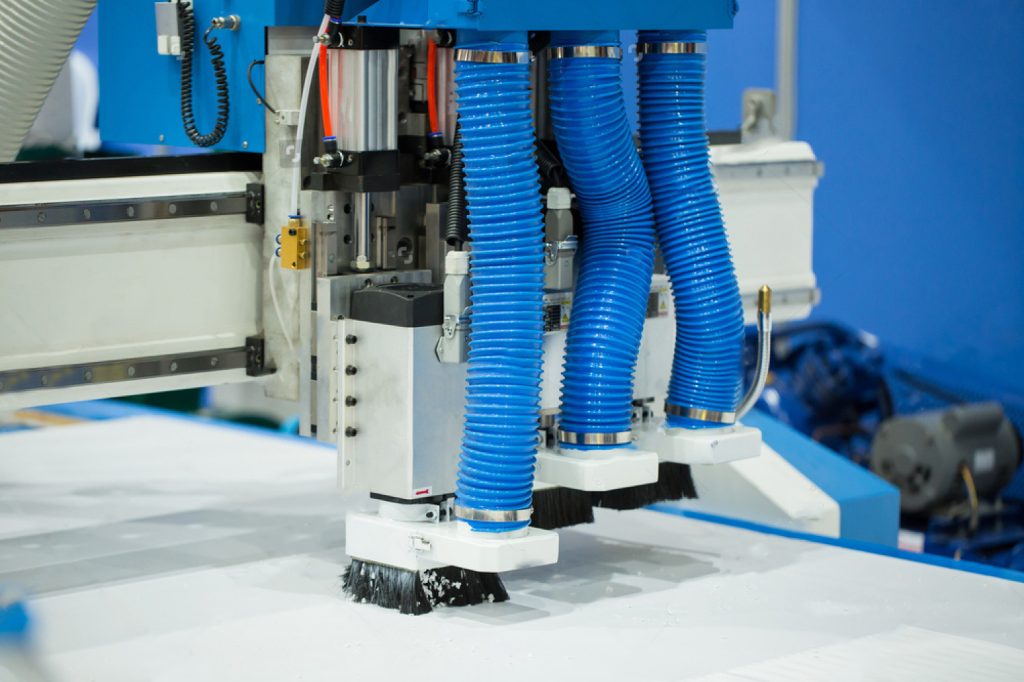


Slide 1
We Have the Know-How
and Know-Why of Insulation
and Know-Why of Insulation
Slide 2
More than 40 Years of Experience
Slide 3
More than 40 Years of Experience
Know-how and know-why
With more than 40 years of experience
When it comes to rubber injection moulding, it makes all the difference to use insulation plates designed with the right materials, professionally machined and installed, and capable of withstanding high moulding pressures and temperatures and providing optimum thermal insulation. These insulation plates ensure low manufacturing costs, short processing times and provide the desired product quality. KE Plastic specialises in the mechanical and thermal dimensioning of these insulation plates for installation in rubber injection moulds between the heating plate and the clamping plate. The plates are made according to customer specifications in machining centres specially designed for machining insulation materials.
The founder and managing director of KE Plastic GmbH, Dr. Edgar von Gellhorn,
received his doctorate in the field of plastics manufacturing and processing.
He has over 40 years of experience in the rubber processing sector. This
includes compounding, extrusion, injection moulding and calendering. He also
specialises in the development, manufacture and use of high load capacity
insulation materials.
Rubber injection moulds are equipped with insulation plates between the mould heating plate and the mould clamping plate, in addition to the external tooling insulation. These insulation plates have to withstand high pressures ranging from 100 to 200 bar and temperatures from 100 to over 300 degrees Celsius. These loads occur in cycles. Consequently, the requirement for such plates are excellent thermal insulation, and high cyclical resistance to moulding pressures, temperatures and release agents over a long period of time.
Once the appropriate thermal insulation plate has been selected, the plate’s qualitative condition and proper handling are decisive factors in subsequent production. The plate has an enormous impact on product quality, the amount of work needed for deflashing, and wear on tool edges. This is often overlooked.
Excessive use of the insulation plate, improper operation of the machine, or the use of a plate with an unsuitable polymer compound (matrix) that does not meet requirements can cause surface burns on the insulation plate due to the high heating plate temperature and can thereby result in an undersized plate-centre.
The reduced thickness in the centre is usually a result of improper tooling set-up. Deformation typically occurs when tools of different dimensions are installed in succession and the moulding pressure is not matched to the size of the tool. This can be prevented to a large extent by reducing the moulding pressure in proportion to the mould surface.
Polyester resin systems should not be used above an operating temperature of approximately 150 °C. In high-temperature applications, temperature differences ranging from 100 °C to 300 °C between the upper plate (hot plate) and the lower plate (mould plate temperature up to 60 °C) are common. In such applications, high-grade, temperature-resistant polymers with an extremely dense network, combined with high-strength reinforcing materials that have low thermal conductivity, and specialised manufacturing processes are crucial. The plates can then withstand these extreme thermal stresses (shear stresses) without damage over a long period of time, even under cyclical loads.
Would you also like to increase service life? Experience has shown that it is best to select a plate with a higher temperature resistance.
At the time of installation, ensure that the plates are subjected to minimal pressure perpendicular to the plate surface. Slippage can cause high stress peaks and should be prevented. Elongation of the insulation plates always corresponds to the respective metal plate on the upper or lower side.
We exclusively use multi-axis NC machining centres for machining each thermal insulation plate. Depending on specifications and requirements, we use water jet cutting or mechanical processing techniques.

With water jet machining, it is possible to produce any desired contour and, for example, to design edges with small radii. Plates with thicknesses up to 30 mm can be cut with smooth edges and no micro-cracks. Since the absence of micro-cracks prevents oxygen from penetrating into the interior of the plate, the service life of our plates is significantly increased compared to that of plates produced using non-optimised cutting techniques.

The milling technique is applied when plates with grooves or countersunk holes are required. A 5-axis NC milling machine provides the platform for this purpose. As with water-jet cutting, the machining conditions are optimised to ensure smooth edges and prevent micro-cracks.
Dr. Edgar von Gellhorn promovierte am IKV in Aachen über Kunststoffverarbeitung mit der Spezialisierung Faserverbundwerkstoffen. Er gründete KE Plastic im Jahr 2001. Seit über 40 Jahren ist er auf dem Gebiet der Gummi- und Compositesverarbeitung tätig und sammelte seine Erfahrungen als CTO bei namhaften internationalen Firmen. Sein breites Tätigkeitsfeld umfasst die Compoundierung, das Extrudieren, das Kalandrieren und den Spitzguss. Hinzu kommt die Entwicklung, Herstellung und der Einsatz von hochbelasteten Isolationswerkstoffen. Er publizierte zahlreiche Fachartikel, wird als Erfinder in mehreren Patenten aufgeführt und fungiert als Fachreferent. Als Consultant berät er in hoch spezialisierten Einsatzgebieten von Gummiformartikeln wie z.B. Trinkwasser, FDA oder Brandschutzanforderung.
KE Plastic GmbH
Brunnenweid 2
5643 Sins
Switzerland
Tel: +41 41 787 1964
Fax: +41 41 787 2714
E-mail: info@keplastic.com